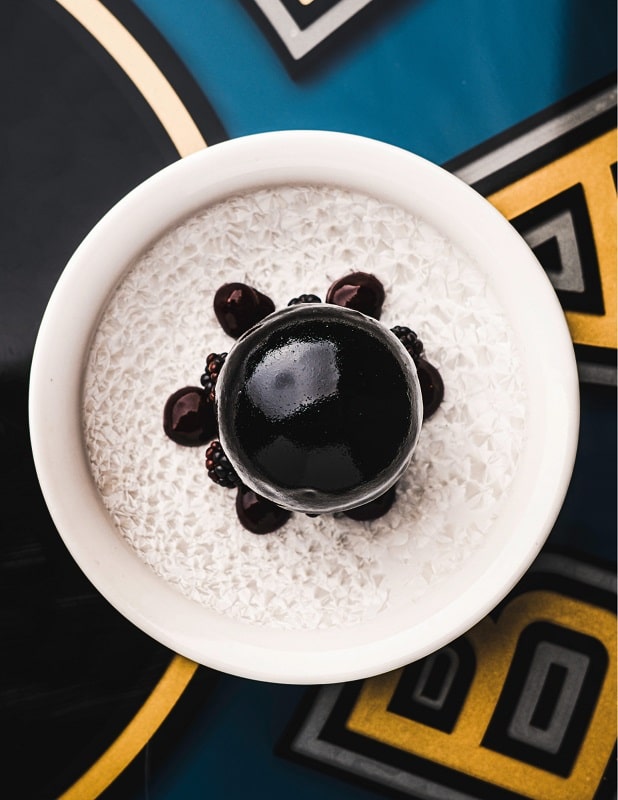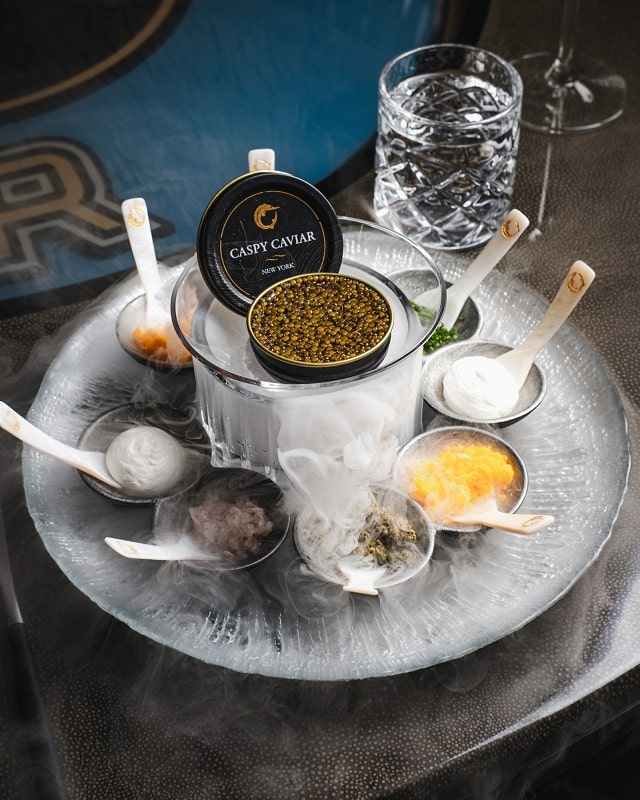A Beginner’s Guide to Caviar
A seafood dinner is a great way to enjoy a delicious, healthy meal. Unfortunately, some people interchange the words ‘fish’ and ‘seafood’ and think that all seafood has a strong fishy odor or taste. You might be surprised to discover many seafood options aren’t fish, such as lobster, shrimp, mollusks, and caviar.
Our beginner’s guide to caviar explores this non-fish seafood delicacy. We understand many people are nervous about trying foods for the first time. Ordering caviar can be daunting if you aren’t familiar with the various types of caviar available and how they differ. You may also need help eating caviar, which is why we offer some tips about serving this delicacy.
Thanks to our guide, you can order and eat caviar with confidence and discover a popular seafood hors d’oeuvres that packs plenty of omega-3 fatty acids, selenium, and other nutrients into every tasty bite.
What caviar should beginners try?
Caviar is one of several seafood delicacies. It’s known for its savory, salty crunch. Most people enjoy caviar as an appetizer and spread it on crackers, bread, or miniature pancakes called blinis.
Caviar is roe or fish eggs. However, to be considered true caviar, the roe must come from wild sturgeon from the Caspian Sea or Black Sea.
Caviar
Caviar traditionally comes from wild sturgeon. Caviar distribution involves harvesting the roe, or eggs, from osetra, beluga, and sevruga sturgeon. Since osetra, beluga, and sevruga sturgeon are critically endangered, regulations protect these species, which is why production methods have changed. Although harvesting the roe still involves killing the fish, Russian and Iranian caviar producers now farm fish for harvesting.
- Beluga caviar: Beluga caviar has the lightest flavor of the three types of caviar. Its spicy, nutty flavor is appealing and has almost no odor. Beluga roe is larger than osetra and sevruga roe.
- Osetra caviar: Osetra caviar boasts a nutty flavor that’s saltier than beluga caviar but lighter than the strong taste of sevruga caviar. Although nutty in flavor, osetra caviar has a creamy texture. Osetra sturgeon eggs are smaller than beluga roe but larger than sevruga eggs.
- Sevruga caviar: Sevruga caviar has the strongest flavor. Its eggs are the smallest
Caviar substitutes
There are several options for traditional caviar, including the following:
- Herring caviar: Herring caviar is an excellent, affordable, crunchy option for those who appreciate the briny taste of sevruga caviar
- Kaluga caviar: Kaluga caviar is a sustainably sourced beluga caviar alternative with a buttery flavor
- Lumpfish caviar: This caviar substitute delivers the omega-3 fatty acids caviar is known for without the saltiness
- Salmon caviar: Salmon caviar is made from salmon roe. One of the primary benefits of this substitute is cost because it’s more affordable than caviar. It delivers a salty, slightly fishy seafood option that is popular in Japan and Russia.
- Snail caviar: Snail caviar is an excellent alternative for those wanting a caviar-type appetizer with no fishy odor or taste. Snail caviar’s earthy taste is more comparable to mushrooms than seafood.

Enjoy caviar and more on the Vegas Strip.
How do you pick the right caviar?
Whether buying caviar to eat at home or ordering caviar in a restaurant, choosing the right caviar ensures you enjoy an enriching experience.
Those who don’t like the smell or taste of fish should opt for beluga caviar. Beluga caviar is the most popular option on the market, appealing to caviar fans and newcomers alike. The primary drawback of Beluga caviar is cost because it’s more expensive than Osetra and Sevruga caviar.
Osetra caviar is a more affordable option for those trying caviar for the first time. It’s ideal for those who don’t enjoy seafood with a briny odor or taste. Many recommend Osetra caviar as the ideal choice for first-timers because of its mild taste and affordability.
The mineral content is higher in Sevruga caviar, adding to its distinct taste. The strong taste is one of the reasons Sevruga caviar is most popular with caviar fans experienced with this type of seafood.
Make sure you check the packaging for the country of origin when buying caviar. Each country has differing regulations and processes, which affect the caviar’s taste and quality. Russia and Iran use water from the Caspian Sea to produce sustainably sourced caviar that delivers an authentic taste.
How do you eat caviar?
Eating caviar begins with choosing what accompanies this delicacy. When serving caviar, you can choose between toast, bread, crackers, or blinis. You may favor toasted baguette slices if you want something to offset the taste and texture, or you may opt for crackers if you want to emphasize the taste of the caviar.
Put a spoonful of caviar on the bread, blini, or cracker, and enjoy. Caviar is often paired with one of the following beverages:
- Champagne
- Rosés
- Sparkling wine
- Vodka
When storing caviar, you should keep its temperature at or slightly below freezing without placing it in your freezer. Putting the caviar on ice and keeping it in your fridge is the optimal way to store it. If you can’t keep it on ice, place the caviar in the coldest part of your fridge until you’re ready to serve it.
Enjoy fine dining at Aqua Seafood & Caviar Restaurant

Elevate your dining experience at the best seafood restaurant in Las Vegas. Aqua Seafood &
Caviar Restaurant provides a refined dining experience with expertly crafted appetizers, entrees, and more. Our menu features Osetra and Kaluga caviar and other popular seafood options such as lobster, scallops, and crab.
Sources:
Blini. (2023).
Dube, P. (2023). Caviar: Nutritional Facts, Health Benefits, and More.
Kubala, J. (2021). Is Seafood Healthy? Types, Nutrition, Benefits, and Risks.
